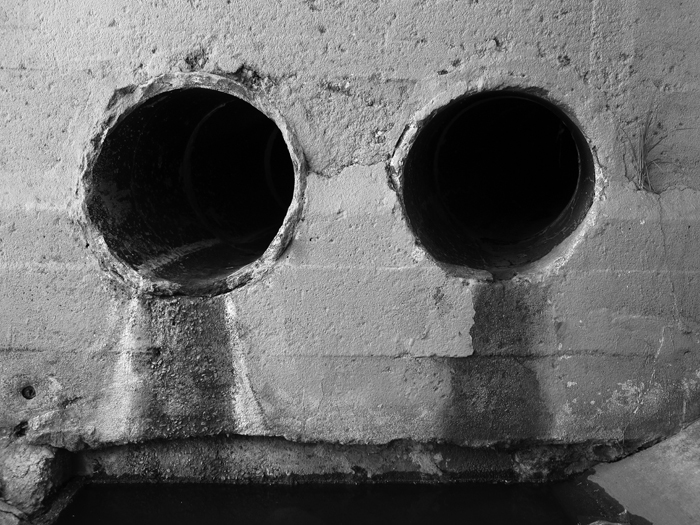Dry Bones: A different look at life in Denver
 By Sarah Harvey
By Sarah Harvey
We began just north of Union Station, in the shadow of Coors Field, and made our way southwest along Delgany Street; it was a small stretch of land near the railroad tracks that development had missed (for now). We walked past a warehouse, past dirt lots just waiting for the right buyer. We stopped for a few minutes near an empty lot, where Robbie and Matt, our tour guides, reminded us to think about the meanings behind things we saw. At one point during the walk, Robbie pointed to an orange bottle cap in the dirt, explaining that he knew the group that handed out orange juice with just that color bottle cap. That piece of plastic on the ground was litter—but it was more than that too. It marked a place where someone had received help.
The tour was conducted by a church called Dry Bones, an organization that ministers to and supports street kids. Called a “turf tour,” these guided walks take visitors along the Cherry Creek Trail and the Platte River, educating them about homelessness and poverty along the way. Dry Bones often takes youth groups, but sometimes they take along downtown businessmen and women. They want to show people not normally exposed to it the realities of street life, the ultimate goal being to inspire more compassion and understanding. The walks happen intermittently, as groups request them.
The places on the tour are where the kids they minister to hang out during the day, or sleep at night. The day I tagged along, the walk consisted of a church group from Westminster and one from Fort Collins. Matt Wallace, Co-Director of Dry Bones, along with Robbie Goldman, Director of Spiritual Formation, led the group.
At Union Station we hopped on the mall shuttle. We got off at Larimer St., walked down Larimer Square, then crossed 14th St. and descended to the Cherry Creek Trail. We stopped here to talk about values. What things did we value? What about the people who enjoyed Larimer Square? What did Denver value as a community? Matt talked about how a community’s values are written into everything, engineered into buildings and public spaces. He pointed out the grates covering the spaces underneath a bridge spanning Cherry Creek. According to Matt, it was in the city’s best interest to keep those places closed off, to keep people out. But what if you were one of those people the city was trying to keep out? Matt and Robbie asked us again to think about this from a street kid’s point of view.
Just when I was beginning to wonder why Matt had made such a big deal about closed-toe shoes we came to the first culvert. We climbed down a few rocks so that we were standing beneath the path at creek level. The culvert was about six feet in diameter, so once we were down, we had no problem climbing in. We walked in a few yards, then everyone huddled together while Matt and Robbie talked about what places like this meant for the kids they minister to. Obviously, it was a shelter. It was also a hiding place. Hidden from the view of anyone on the path, it was a place where drugs could be used, where a prostitute might conduct business. Someone had spray-painted the word freedom on the side of the culvert, but—perhaps ironically—they had added an extra “o” to the word: freedoom.
Along the way Matt and Robbie pointed out the signs of heroin use and then explained what some of the debris meant. The bottom of an aluminum can was a cooker. The small, round pieces of black plastic were once the packaging for the drug. It was at this point that we got to the heart of what they try to teach their volunteers: it is easy enough for someone in our position to say, “Why don’t you just get a job? Why don’t you just stop using drugs? Why don’t you just go to a shelter?” But these things, while easily said, can be nearly impossible for a person to do.
At Confluence Park we turned to walk north along the Platte River. We entered the final culvert just north of Commons Park. We walked much farther in this time, 75, maybe 100 yards. Robbie had two flashlights. Water was trailing down the middle, and we were all trying to straddle the stream, waddling along, putting our hands on each other’s shoulders to make sure we didn’t trip. When we finally stopped, Robbie turned off the flashlights. We sat for a moment in complete blackness, but not silence. Sounds echoed down the walls of the culvert: trickling water, our breathing, feet shuffling to find a more comfortable position. I sat there, silently willing Robbie to turn the light back on. He didn’t at first, but he began talking. He told us about a girl, a friend of his and Matt’s, who slept in that culvert every night for months. She felt safe there, in that pitch-black, echoing tunnel, because she could hear if someone was approaching her. •
